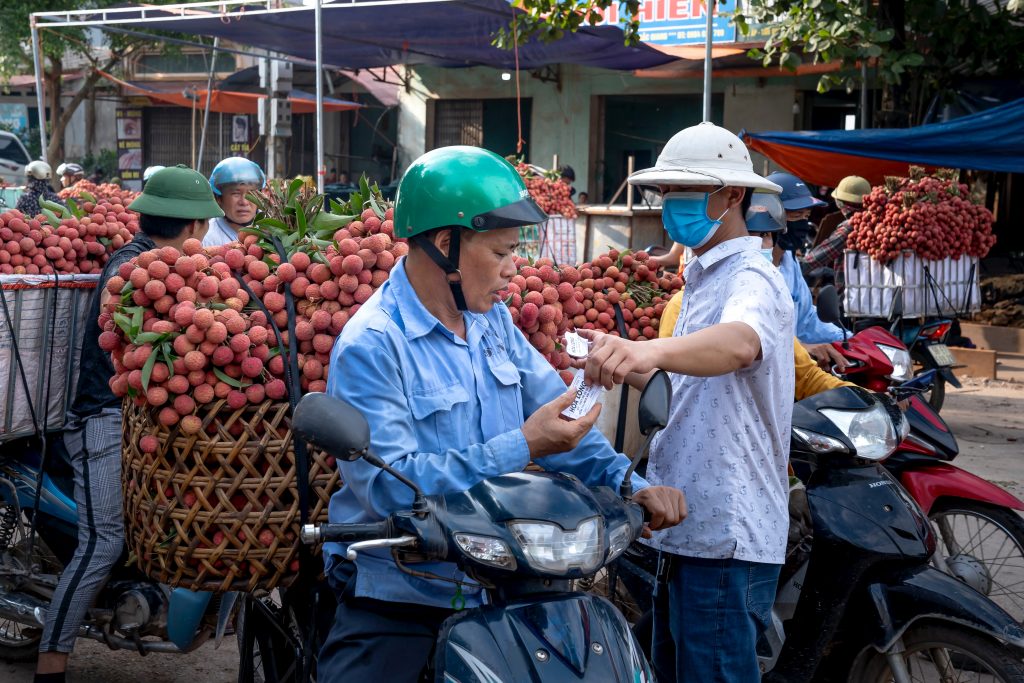Inventory probes & Insects
Inventory probes & Insects: Various insects can affect stocks within companies. There is a difference between “fly” and “beetle” species.
The general rule is that good hygiene, cleaning, covering stocks, constructional measures, ventilation and the correct storage temperatures must be ensured.
Flying insects can be caught with insect lamps or traps.
Beetles can usually be removed by destroying or treating infested stocks.
The following stock-destroyers occur in companies:
Fruit flies
Fruit flies occur in rotting, fermenting masses or forgotten feeding places where there are still remnants. Fresh, intact fruit is not affected.
Fruit flies contaminate fruit and vegetable products. They can also be a nuisance due to the large numbers.
Moths
The larvae feed on all kinds of plant materials, such as cocoa, flour, bran, oatmeal, grains, nuts or dried fruits. The eggs are laid on the food. The adult insects do not live on it.
The larvae contaminate the food products. They can also “spin” the flour together, which can cause blockages.
Mites
Mites are found on products of plant and animal origin. They prefer to live at a temperature > 25°C and a high humidity of > 70%.
Mites ensure that the quality and/or value of the stock products is reduced. This is because of the pollution they cause.
If in doubt about the presence of mites, a little flour can be smoothed out. If this flour becomes rough again over time, this is an indication of mites.
Blowflies
Flesh flies can smell the smell of rotting meat from miles away. The females lay the eggs on rotting meat. Of the blowflies, the blue blowfly occurs mainly in buildings.
All blowflies can spread pathogens and viruses. They also contaminate meat and meat products.
Bread beetle
The larvae of the bread beetle feed on all kinds of hard, dry starchy products, such as macaroni, stock cubes, dog kibble and cat kibble.
The larvae bore out through the food. And leave round holes. They also drill through any packaging materials.
The bread beetles reduce the quality of the products.
Narrow Beetles
These beetles feed on grains and nuts, but can also be found in dried fruit. These products are only affected if other inventory contaminants are already present. If batches are severely affected, they are unsuitable for consumption.
Klanders
Weevils lay their eggs in a grain, rice or corn kernel. The larva eats the grain empty and pupates in the shell of the grain. As a result, a client affects the stock. With large numbers, the temperature of the stock can rise. This allows fungi to grow.
Flour beetle
The flour mill has a preference for slightly solids, such as flours and bakery products. Flour beetles can cause damage to long-term stored stocks of flour products. Provided these stocks are stored under fairly humid conditions.
Rice flour beetles
Rice beetles feed on plant foods such as flour, bread, cookies, macaroni and dried fruits. They also occur in spices and chocolate. The rice flour beetles do not develop at a temperature < 20°C.
The beetles live among the stored supplies. In empty storage cells they live on the remnants that are left behind in seams and cracks, for example.
Other annoying insects.
Ants
Ants are very annoying and undesirable. They can transfer bacteria and in this way sometimes affect products.
By closing foodstuffs properly and using good hygiene and cleaning, ants are prevented.
In addition to the normal ants, the pharaoh ant is increasingly common in the Netherlands. These ants are much smaller than the native species. And are harder to fight.
(Room)flying
Flies can spread disease through their legs, mouthparts and hair. But also through their feces. The larvae clean up manure and waste. Eggs are also laid on, for example, meat.
Due to good hygiene, closed stocks, a low temperature and fly lamps, the nuisance caused by flies is greatly limited.
Cockroaches
General features
The most common cockroach is the German cockroach. The German cockroach is clearly distinguishable by 2 black spring stripes on the breast shield.
The German cockroaches are mainly found in dark, humid and warm places. Think of refrigerators, kitchen cupboards, sinks and cooking islands.
The German cockroach feeds on sweet products, carbohydrates, foodstuffs, dead animals and waste products. Paper is also eaten when there is a lack of food.
- The German cockroach can survive up to 40 days without food.
- A German cockroach lives about 6 months.
- Female cockroaches can have an egg package containing an average of 30 eggs. The development from egg to cockroach takes about 2 months at 25°C.
- The optimum temperature is 30°C.
Other less common cockroaches include:
- American cockroach (lifestyle like the German cockroach).
- Australian cockroach (only in warm and humid environments such as tropical greenhouses).
- Brown-banded cockroach (lives mainly on starchy products and at a higher temperature of approximately 30°C).
- Oriental cockroach (lives mainly on starch and sweet products. In a humid environment).
- Surinamese cockroach (lives mainly in warm and humid environments such as tropical greenhouses).
Damage
Cockroaches can transfer pathogens such as Salmonella to food and packaging with their faeces. With larger numbers there is also a chance of unpleasant odors.
Prevent
Cockroaches usually enter companies through packaging that is used several times. Good control prevents internal contamination.
In addition, it is very important to maintain good hygiene. Remove possible food sources, provide good ventilation, seal cracks and seams and avoid possible hiding places.
Combat
The cockroaches can be controlled with glue traps if it concerns small quantities. The glue traps can also be used for an inventory of the degree of contamination.
In case of a larger contamination, a control by a specialist company is necessary. In the control, use can be made of a residual agent in the form of drops. Or you can opt for spraying a residual agent.
Related articles to Example of Pest Control - inventory probes & Insects
Many customers and visitors to this page 'Example of Pest Control - inventory probes & Insects' also viewed the articles and manuals listed below:



